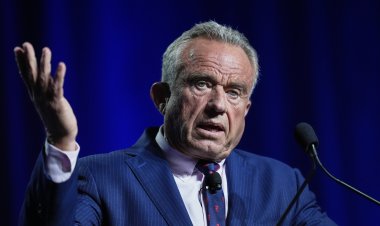Inflation eases but Fed can't conquer housing prices
As the Biden administration cheers signs that price rises across the economy have started to cool, homeownership remains out of reach for many first-time buyers.


Consumer price inflation is easing, sparking hope that the U.S. may be turning the corner on the worst price spikes in decades.
Yet the single biggest component of the Consumer Price Index — housing costs — continues to be the main driver of inflation, rising twice as fast as everything else.
The government reported Wednesday that overall inflation rose 3 percent on an annual basis in June — the lowest level since March 2021. But the cost of shelter soared by 7.8 percent in a reflection of post-pandemic rent spikes, part of a trend that has defied the Federal Reserve’s aggressive interest rate hikes over the past year.
So even as the Biden administration cheers signs that price rises across the economy have started to cool, homeownership remains out of reach for many first-time buyers, who are already facing a severe lack of supply. Housing-driven inflation may also be a key reason President Joe Biden’s approval numbers on the economy have been so low, even though the job market has shown remarkable resilience and fears of an imminent recession have subsided. Fifty-seven percent of Americans disapprove of Biden’s handling of the economy, according to a RealClear Politics average of polls conducted over the last month. Just under 39 percent approve.
“For younger voters, who are seeking to move out of rentals or to find an affordable first home close to work, that can be close to impossible minus a down payment from a wealthier parent,” said Karen Petrou, co-founder and managing partner of Washington-based consulting firm Federal Financial Analytics. “This is one of the really classic aspects of American economic inequality,” she said. “People are squeezed.”
The Fed has raised its benchmark interest rate by 5 percentage points since March 2022 in a bid to rein in inflation, and central bank policymakers will meet July 25-26 to discuss whether to resume hiking rates after pausing last month. While overall consumer price gains slowed, the stickiness of housing inflation is among the factors adding to speculation that the Fed will raise rates.
“Big picture, the Fed tightening has had a huge impact on the housing market; when mortgage rates rose, you saw demand cool,” Zillow senior economist Orphe Divounguy said. But “it’s still an environment where you have more demand than you have supply."
A top Biden administration official welcomed the news that inflation moderated last month.
"Despite repeated forecasts that recession is just around the corner, the U.S. recovery is solid, and inflation is down,” National Economic Council Director Lael Brainard said at an Economic Club of New York event, shortly after the CPI was released. "The economy is defying predictions that inflation would not fall absent significant job destruction.”
Brainard said the housing services' “trajectory is good.”
Council of Economic Advisers Chair Jared Bernstein said a "softening" in housing costs was a factor in the lower inflation reading.
“Given housing's big [weight] in the CPI, this softening is helping to nudge down both headline & core CPI,” Bernstein tweeted.
Indeed, there are signs of hope that the situation will improve in housing. Shelter costs appear to be rising at a slightly slower pace than they did in the spring, notching a 0.4 percent increase last month compared with 0.6 percent in May.
“Over the next few months we’re going to see a decline in the shelter component now that rent growth has slowed,” said Rob Dietz, chief economist at the National Association of Home Builders. “I think that’s good news for the overall focus on inflation.”
And the longer-term outlook is better, according to housing economists. After years of sluggish construction in the wake of the 2008 financial crisis — which fed a historic housing supply shortage that has buoyed prices despite the Fed’s best efforts — some 1 million apartment units are currently being built. That's the highest rate since 1973, according to Dietz.
The typical asking rent in June was up 4.1 percent over a year earlier, according to the Zillow Observed Rent Index — down significantly from its peak of 16.2 percent annual growth in February 2022. CPI typically lags the Zillow rent index by between eight and 12 months, according to Divounguy.
“The rental market is showing that rents have returned to normal — about 4 percent yearly increase is within the pre-pandemic historical range of rent growth,” Divounguy said.
The single-family housing market is another story. Single-family housing starts were down in 2022 and will be down in 2023 too, Dietz said.
The Fed’s rate hikes have led mortgage rates to spike to their highest level in 20 years. The rate for a 30-year fixed mortgage is now 6.8 percent, according to Freddie Mac, the government-run mortgage financier, up from 3 percent at the beginning of 2022.
High rates have cooled the housing market — sales of existing homes were down 20 percent in May from a year earlier, according to the National Association of Realtors — but home prices have remained persistently high thanks to the supply shortage.
Total housing inventory at the end of May was down 6.1 percent from a year earlier, according to NAR. The U.S. is currently 4.3 million units short of meeting the demand for housing, according to a Zillow analysis published last month.
While home prices nationally are below their June 2022 peak, they’re once again climbing after dropping in the fall, according to the latest data from the Case-Shiller Index. The increase in shelter costs in the inflation gauge has typically lagged Case-Shiller by about 16 months in recent years, according to an analysis by the White House Council of Economic Advisers.
“These lags aren’t exact, but we should start to see [declining shelter costs] in the data pretty soon,” said Eddie Seilers, associate vice president of housing economics at the Mortgage Bankers Association.
“That the housing component is beginning to show deceleration means that overall CPI will surely also be pulled down steadily,” said Lawrence Yun, chief economist at NAR. “The rent trend is clear cut — it will decelerate, decelerate, decelerate as we proceed through the year.”
Yun said the Fed should take into account that rents are falling when it meets later this month.
“All indications are they’re going to do another quarter-point rate hike, but one has to assess, given the monetary policy lag time, are they looking into the rear-view mirror?” he said.












